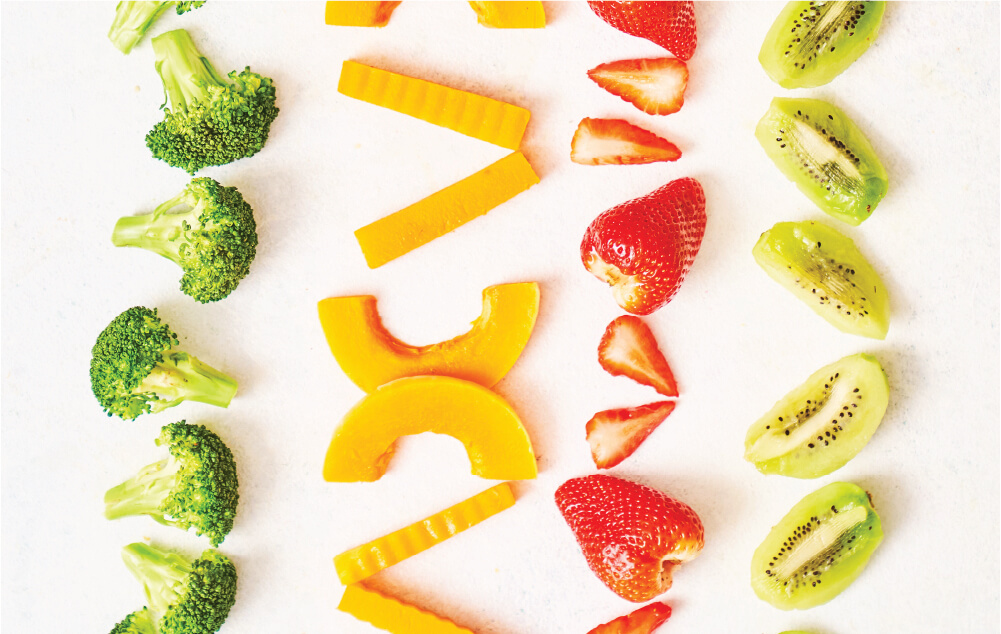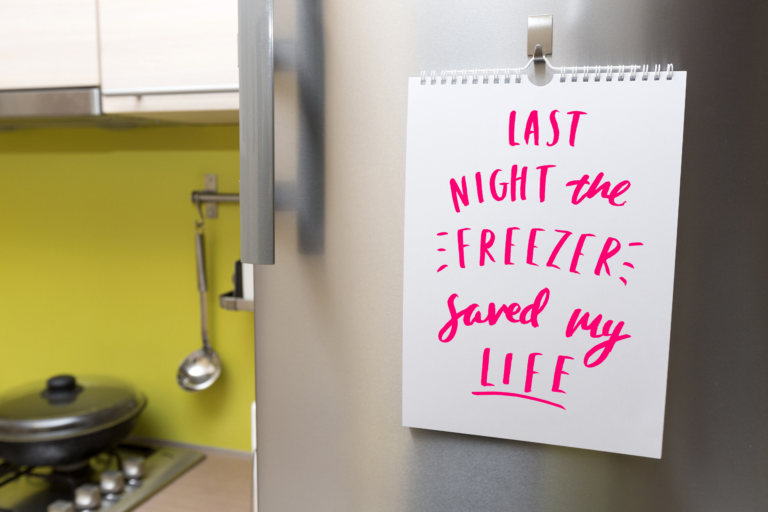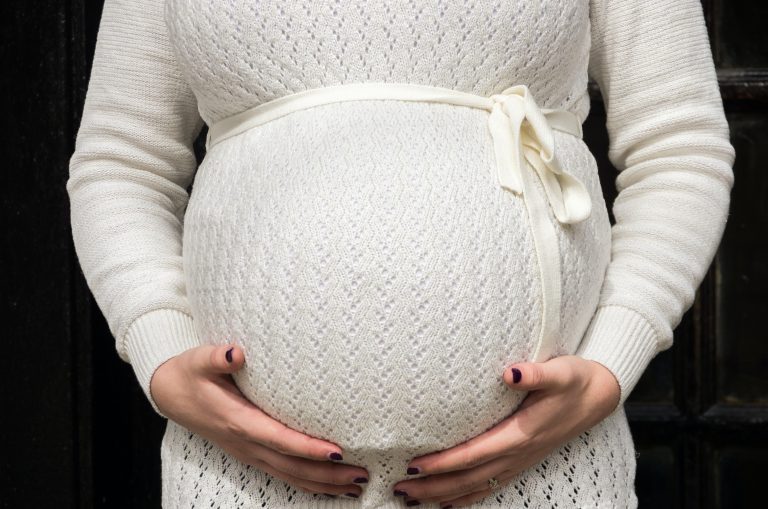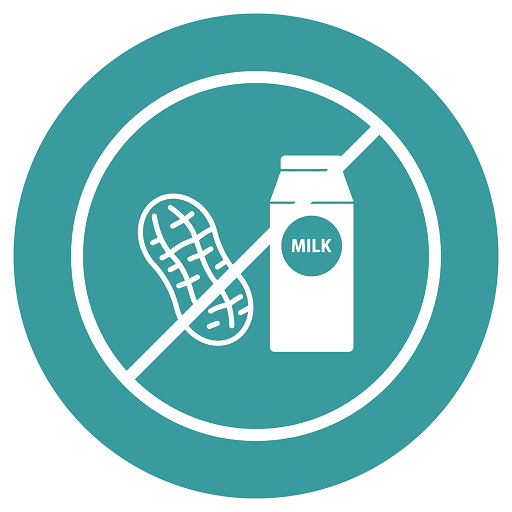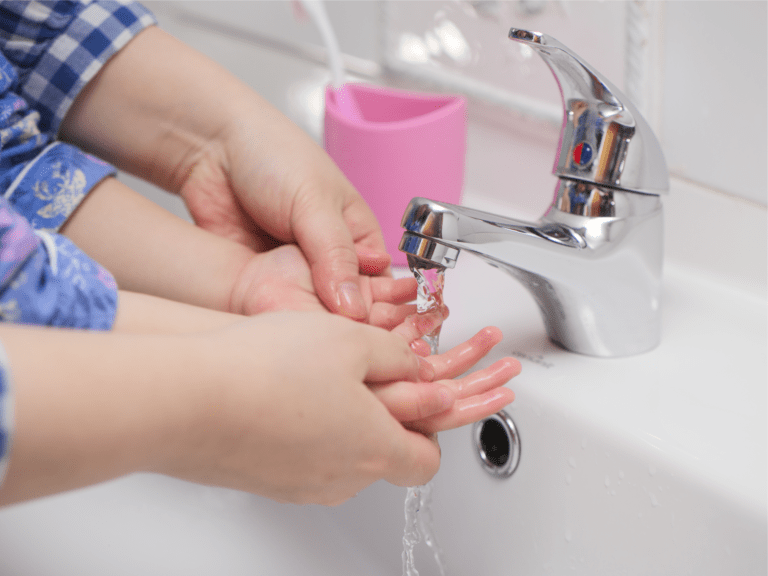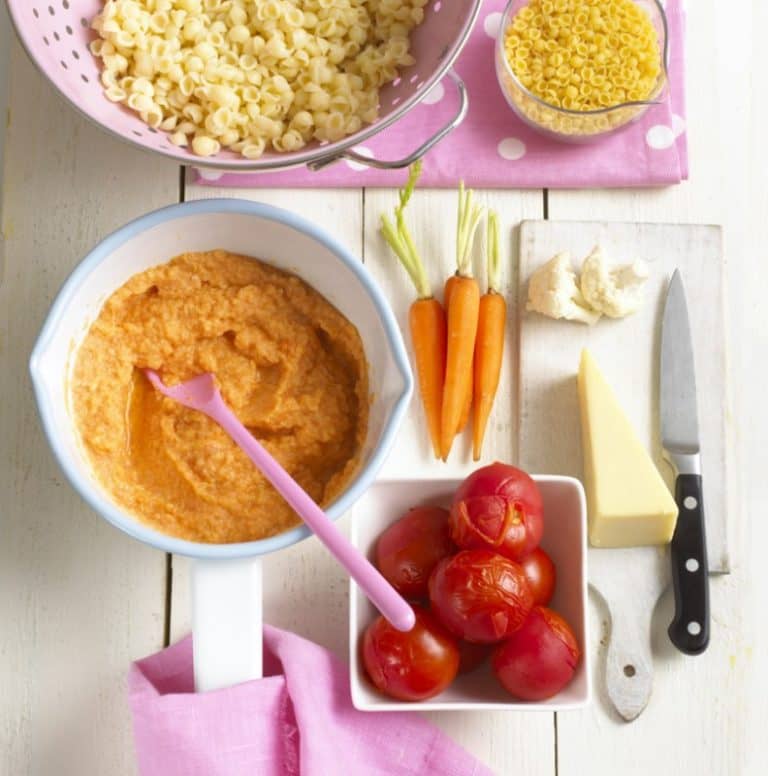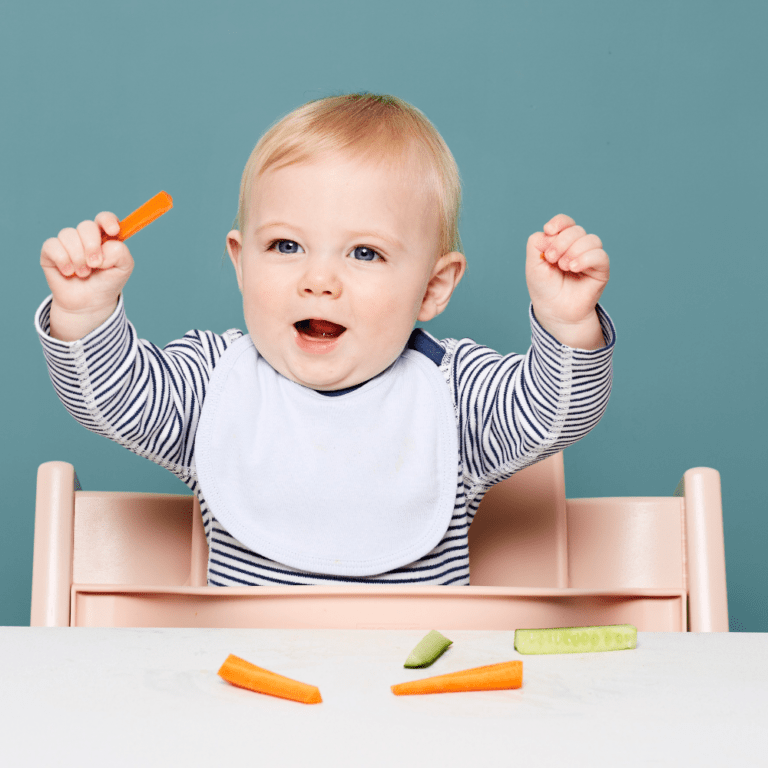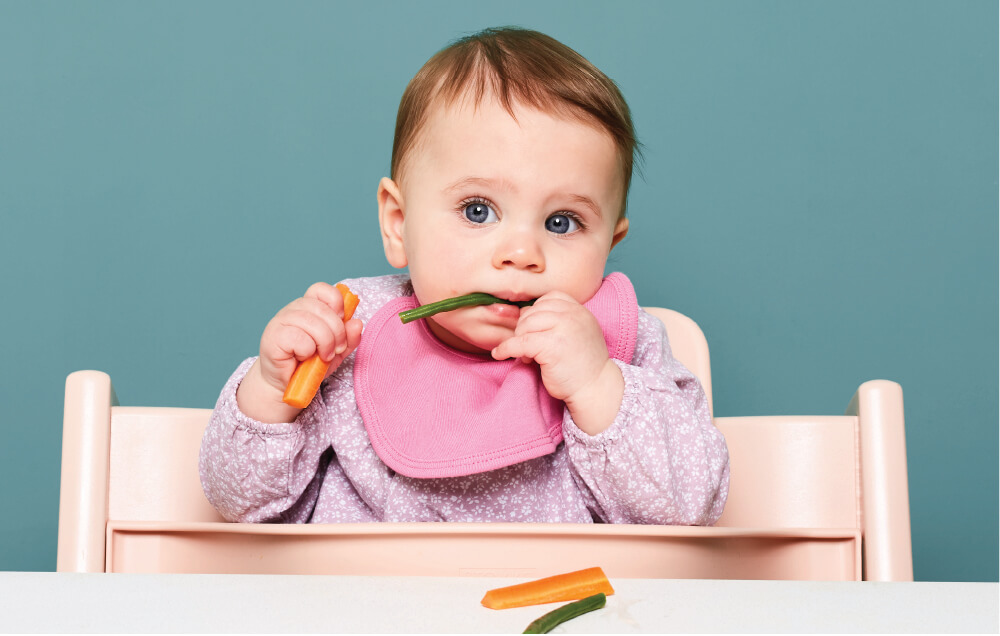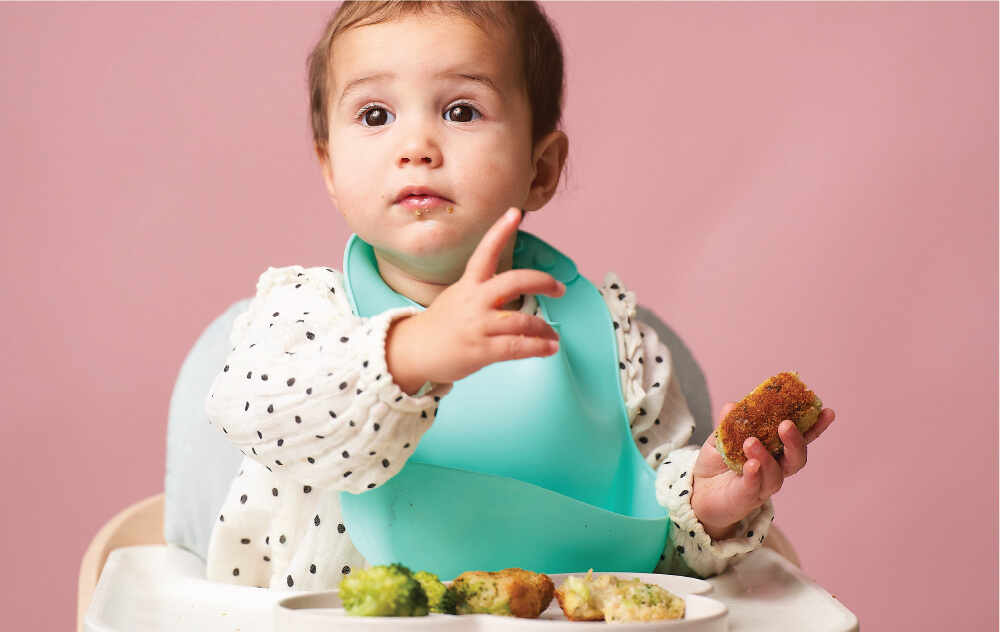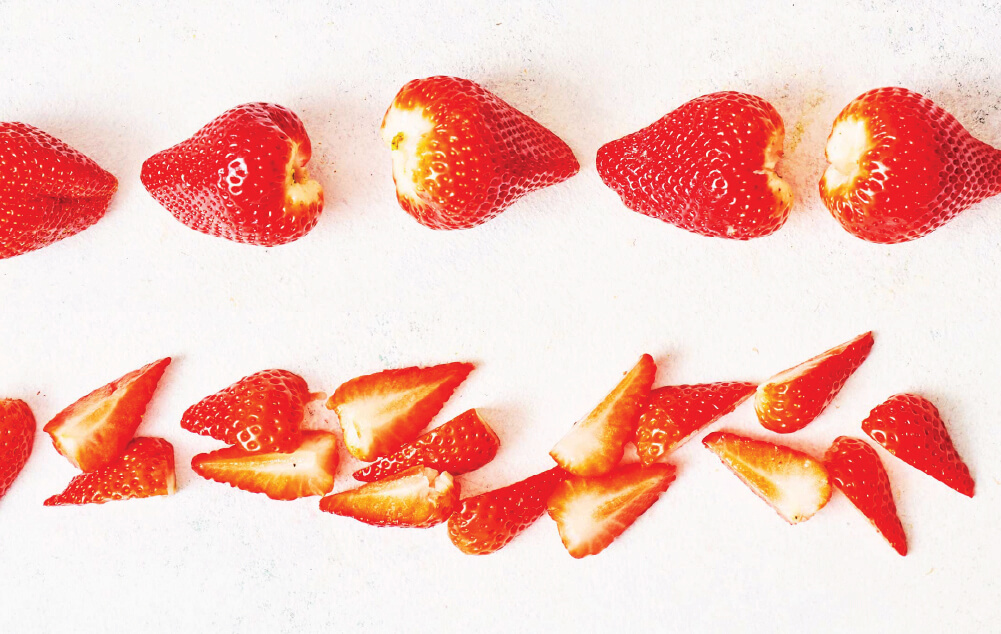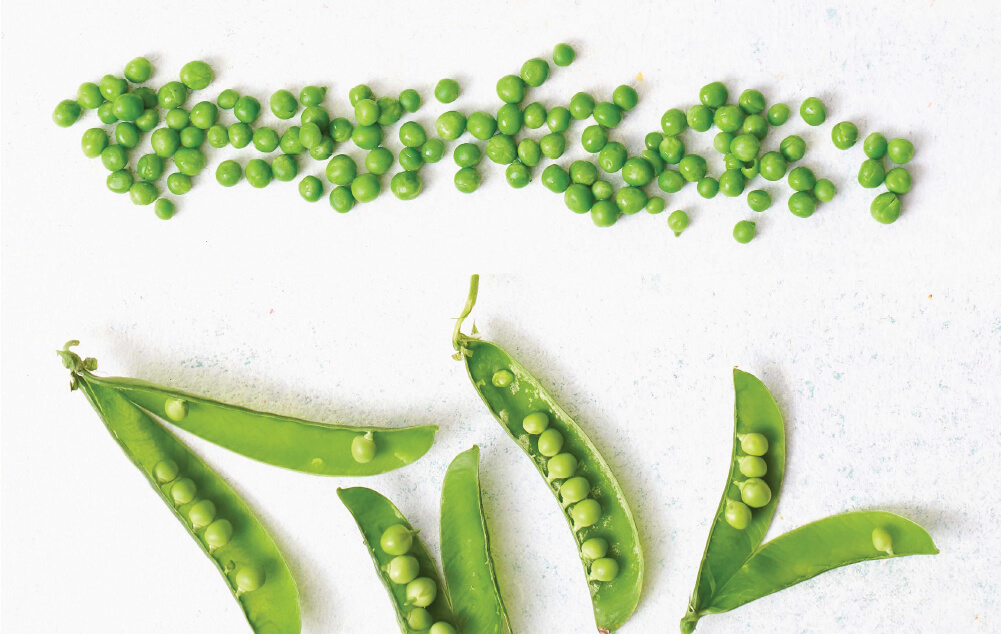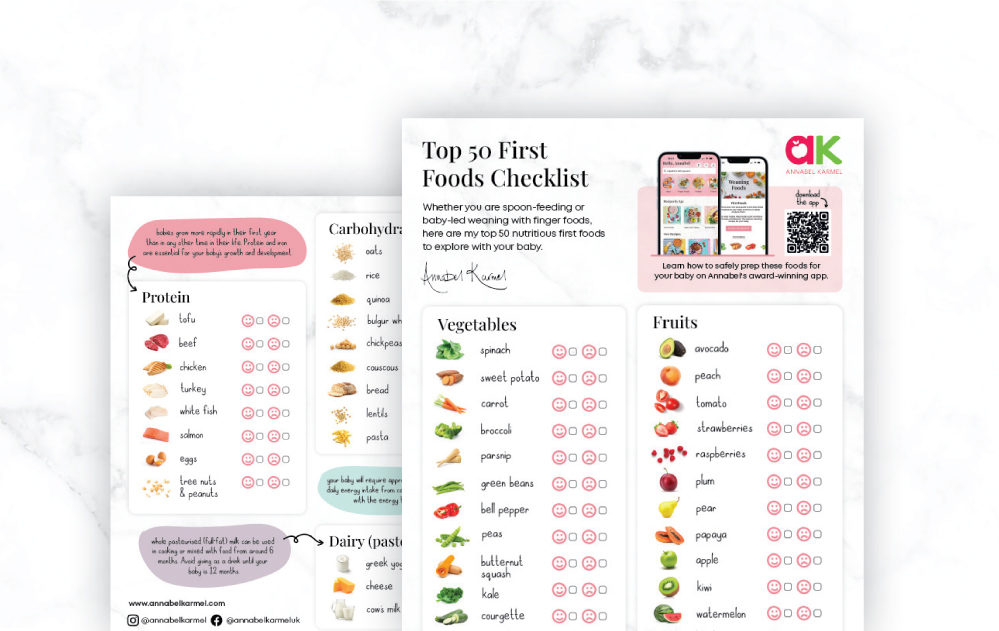Introducing solid foods to your baby and starting to wean is a big milestone for parents. The process of slowly moving from milk feeds to trying a variety of different tastes and textures can be exciting and daunting at the same time. One question I am always asked by parents at the start of their weaning journey is ‘what do I do if my baby chokes?’ alongside ‘I don’t want to offer my baby finger foods as they might choke’.
It’s a common misperception that gagging and choking are the same thing and they are often confused… but they are most definitely not the same and it’s important to be able to recognise the difference between the two.
Is gagging normal when weaning my baby?
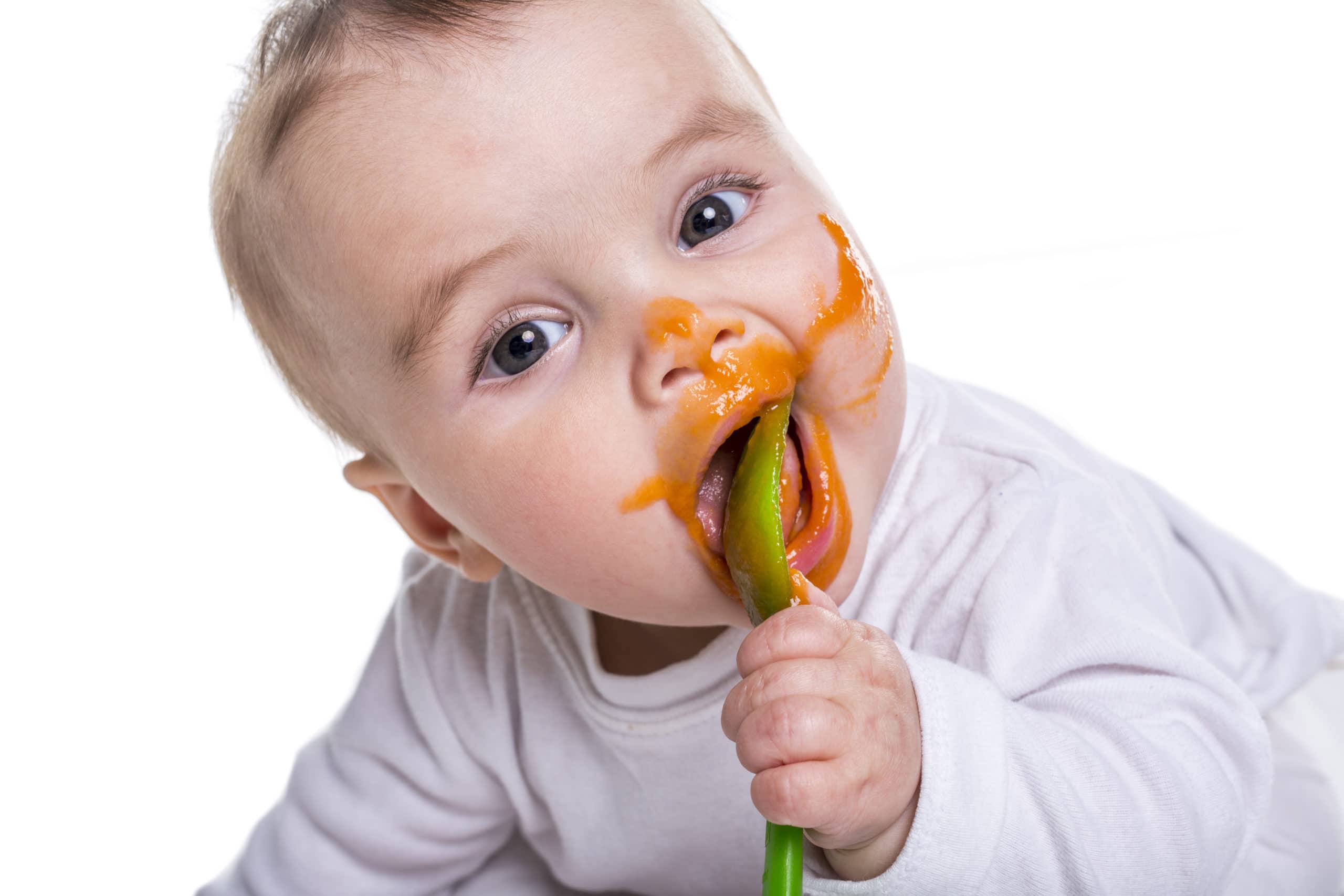
Think of gagging as your baby’s in-built protective mechanism against choking. Babies have highly sensitive gag reflexes that are triggered very close to the front of the tongue, especially at the start of weaning.
This means that your baby will often gag when they first start on solid foods and for the first few weeks of weaning. This might mean they simply push food out of their mouth with their tongue, or they may retch or look like they are about to be sick. They are rarely distressed by this and will often simply continue eating again straight after.
Gagging occurs because your baby needs to develop and mature their oral motor movements with time as they learn to eat. They don’t yet have the control to coordinate chewing and moving food to the back of their mouth to swallow, so they gag to stop food going down the wrong way. It’s quite clever really!
Therefore, don’t be put off if your baby gags during the early stages of weaning. They are simply learning to train their oral muscles to work in a new and different way and move food from the front of their mouth to the back in order to swallow.
As your baby continues on their weaning journey and practices eating, the gag reflex will move further back in their mouth and they will naturally gag less.
It’s important to note that some babies may have more pronounced gag reflexes, for example if they have suffered with reflux, vomiting, or had tubes for feeding for example. If you’re worried about your baby’s gag reflex always seek help from your GP who can then refer you to a specialist speech and language therapist.
What do I do if my baby gags during feeding?

Firstly, try not to panic and remain calm. This is easier said than done I know, but if you recognise that they are gagging (and not choking) it is important to let their body naturally sort it out for itself rather than intervening.
Try waiting a few seconds, maybe count to ten slowly in your head. It is very likely they will bring the offending food to the front of their mouth and spit it out or start to eat it again.
By stepping back and allowing them to gag, you are allowing them to learn how to coordinate their muscles and perfect this new skill.
It’s important to remember that you should never leave your baby alone whilst feeding and make sure that they are always well supported or able to sit in an upright position. This will significantly reduce the risk of choking as the gag reflex may not be as effective if they are leaning backwards.
How do I tell the difference between gagging and choking?

Choking is very different to gagging. This is when your baby’s airway becomes blocked. They may be coughing and trying to remove the offending obstacle, but they may also be unable to cry, cough or make any noise at all. They may be unable to breathe and you may see their lips or face turn blue.
This is a medical emergency and they will need immediate help.

What foods are a choking risk for my baby?

- Whole nuts – always give nuts ground or as a smooth nut butter
- Whole grapes, blueberries or cherry tomatoes – always serve them quartered
- Fruits with stones such as cherries – remove the stones and serve quartered
- Bony fish – check and remove all bones before offering to your baby
- Cook vegetables so that they are nice and soft for them to chew
What do I do if my baby chokes?
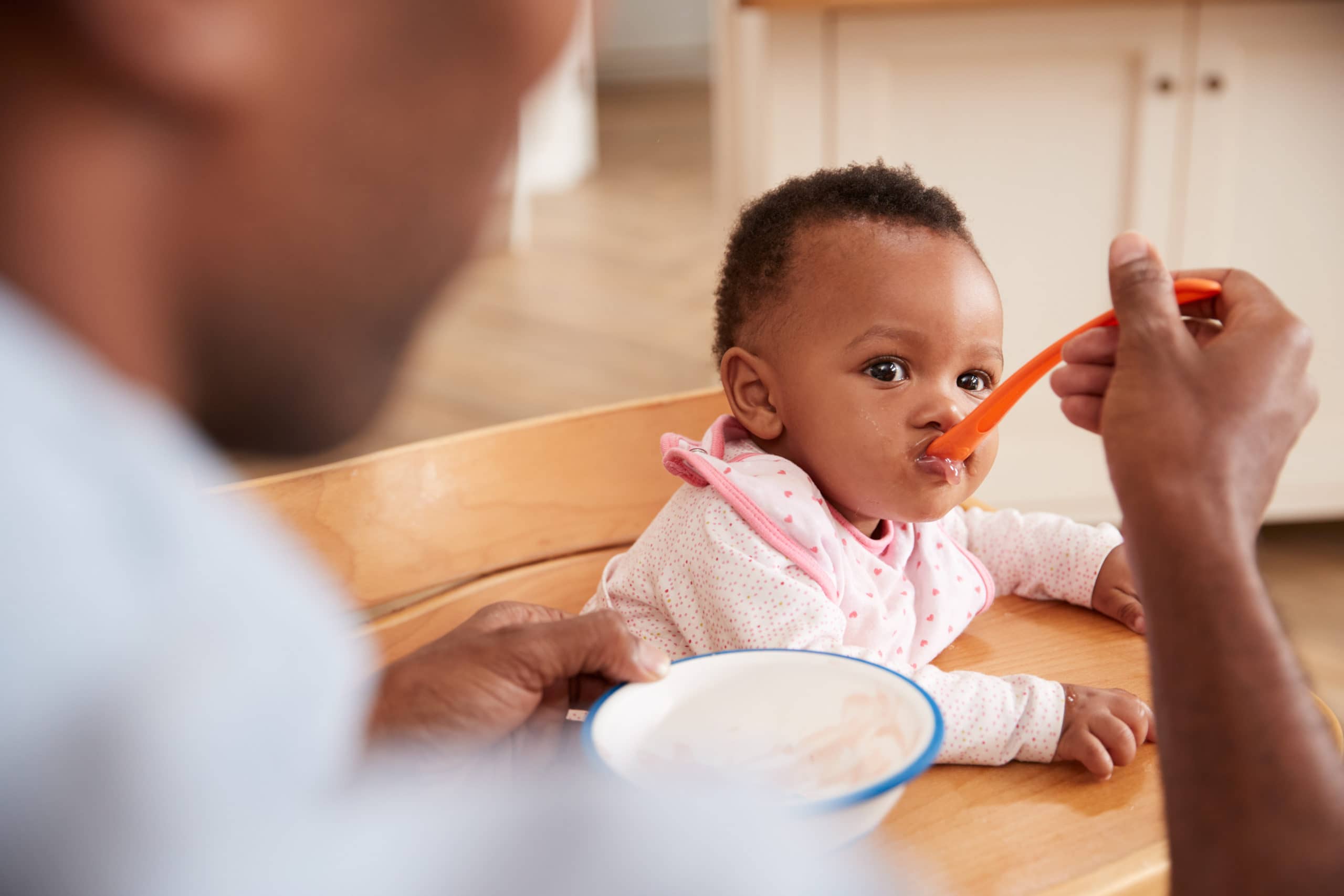
The NHS website, Resuscitation Council UK & the Red Cross websites all have great advice as well as step by step videos to teach you basic first aid and support. You may want to attend a local First Aid Course and your GP should be able to advise you about local courses to you.
If you baby is showing signs of choking, here are some simple steps you can take as advised by the NHS.
- If you can see the object, try to remove it. Don’t poke blindly or repeatedly or you could push it further back and make things worse.
- If your baby is coughing, encourage them to keep coughing, this might help to bring up what they are choking on. Don’t leave them.
- If the coughing isn’t effective (its silent or they can’t breathe in properly) shout for help immediately.
- If you baby is still conscious, but they are either not coughing or their coughing isn’t effective, use back blows.
Back blows for babies under 1 years old
- Sit down and lay you baby face down along your thighs, supporting their head with your hand.
- Give up to 5 sharp back blows, with the heel of one hand in the middle of the back between the shoulder blades.
- If back blows don’t relieve the choking and your baby is still conscious, give chest thrusts.
Chest Thrusts for babies under 1 year old:
- Lay your baby face up along the length of your thighs.
- Find the breastbone and place 2 fingers in the middle.
- Give 5 sharp chest thrusts (pushes) compressing the chest by about a third.
Following back blows and chest thrusts reassess your baby or child as follows:
- If the object still hasn’t dislodged and your child is still conscious, continue the sequence of back blows and chest thrusts.
- Call out or send for help if you’re still on your own. Don’t leave your child.
- Call 999 if the blockage doesn’t come out after trying back blows and chest thrusts. Keep trying this cycle until help arrives.
- Even if the object has come out, get medical help. Part of the object might have been left behind, or your child might have been affected by the procedure.
If your baby or becomes unconscious with choking:
- Put them on a firm flat surface and shout for help.
- Call 999, putting the phone on speakerphone so your hands are free.
- Don’t leave them at any stage.
- Open the their mouth. If the object is clearly visible and you can grasp it easily remove it.
- Start CPR
It is important to be able to recognise the difference between gagging and choking and the different ways you should treat both.
Remember, gagging is your baby’s natural in-built protective mechanism to prevent them choking as they learn to feed themselves. Choking however, is when their airway is blocked, and they will need immediate help and First Aid.

This article is written by Dr Chintal Patel.
Dr Chintal Patel is a NHS General Practitioner in London. She works with families and children and specialises in women’s health. She also writes a recipe blog sharing health and nutrition information and runs cookery classes for families.
For more helpful advice visit Dr Chintal Patel’s website www.drchintalskitchen.com and Instagram account @drchintalskitchen
